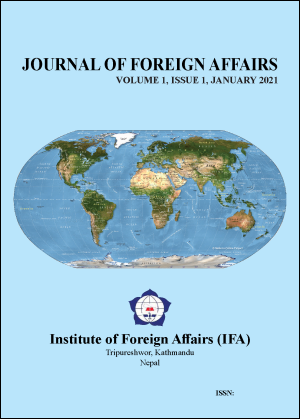Capitalising on Nepal’s Soft Power Heritage in the 21st Century
DOI:
https://doi.org/10.3126/jofa.v1i1.36257Keywords:
Soft Pow4er, Tourism, Religion, Buddhism, Cultural Heritage, Filmmaking, GI TagsAbstract
As Nepal forges ahead in the 21st century, linked to two Asian powers by thousands of years of shared cultures and histories, it is time for Nepal to capitalise on its heritage and look to the future. Nepal must claim and revitalise our shared histories of Hinduism and Buddhism, and create a soft power potential that emphasises traditional religious practices, natural and cultural heritage, and sustainability in a time of climate change. The paper argues that Nepal should anchor itself in the past - invoking the idea of a shared civilisation - and look to the future. The potential of religious and cultural tourism must be fully realised while being sustainable. Private sector entrepreneurship in culture must be encouraged, especially as culture itself - or the many cultures within Nepal - must be thought of as a tool to emphasise Nepal’s soft power. Nepal stands to lose US$ 460 million in the tourism sector alone due to the Covid-19 pandemic and it must diversify its tourism offerings if a recovery is desired. Building on a study of historical literature and contemporary trends in filmmaking, brand marketing and perception building, this paper argues that Nepal must invest in its culture and heritage to build an export policy around geographical indications (GIs), establish a new film production template, making it easier for foreign filmmaking companies to come to Nepal, and finally, reinvent its tourism policy in a world ravaged by the Covid-19 pandemic.
Downloads
Downloads
Published
How to Cite
Issue
Section
License
© Institute of Foreign Affairs

